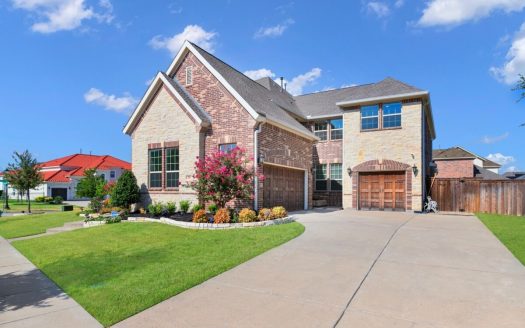How To Pay for Home Renovations
[ad_1]
Key Takeaways
- Before undertaking a home renovation, consider how much debt you have and whether the project is really worthwhile. Most home improvement projects don’t recoup 100% of their costs.
- The average cost of a home improvement project exceeds $48,000.
- There are many ways to finance your home renovation, including home equity loans, home equity lines of credit (HELOCs), credit cards, and mortgage refinancing.
- If you can, pay all or part of your costs in cash. That way, you won’t have to pay any interest.
How you pay for home renovations depends on the project, how much you have saved up, and your ability (or desire) to take on additional debt. If you need to pay for a larger project, might be right for you. If you need a smaller loan, or you prefer an unsecured loan, consider using a credit card, home improvement loan, or personal loan.
Factors To Consider Before a Home Renovation
Before embarking on a home renovation, you should weigh several factors, such as whether the project is necessary, and how much you can afford to pay upfront. If you can’t cover the costs upfront, determine .
Necessity
Before any hammering or sawing starts, think hard about whether the project is a need or a want, advised financial expert Mark Charnet, founder and CEO of estate planning firm American Prosperity Group in Pompton Plains, New Jersey.
Note
Data from Remodeling’s 2022 Cost vs. Value report shows that even the home renovation project with the biggest return on investment—replacement of a garage door—only recoups about 93.3% of the cost.
“I rehabbed my home 24 years ago to the tune of spending $4 million in improvements, thinking that the market would catch up to me,” Charnet told The Balance via email. “After 24 years now, I stand to lose over half of what we spent. We enjoyed the home, but a loss of $2 million 24 years later is a bitter pill to swallow, I assure you.”
If you’re renovating your home in order to increase its value, do the research to make sure you’ll actually get a .
“Be sure you intend to live in your improved home for at least 20 years in order to enjoy … the renovations, but still be prepared not to break even,” he added.
Debt
Aside from determining whether you actually need to do a home renovation, you must figure out whether you can actually afford to take on more debt to pay for the project.
Many lenders look at your (DTI) before approving your loan application. You can figure out your DTI by dividing all of your monthly debt payments by your gross monthly income (typically the amount you earn before taxes and deductions).
So, let’s say your total monthly debt payments are $2,000, which includes debts such as your mortgage, auto loan and credit cards. If your gross monthly income is $6,750, then your DTI is 29.6%. That would fall below the maximum DTI of 35% or 36% that many lenders look for.
If you had no debt, and your lender’s maximum DTI was 36%, you could take out a loan that you would pay back in $2,430 monthly installments. Since you already have $2,000 in monthly debt payments, you wouldn’t be able to take out a loan that would amount to more than $430 per month.
Budget
Mallory Micetech, a home care expert at Angi, an online platform that connects homeowners with contractors and other service providers, told The Balance via email that before you tackle a home renovation project, you should create a budget for it. (Disclosure: Angi is a division of IAC, as is The Balance.)
Important
Make sure your home renovation budget has some flexibility in case surprise costs pop up.
“You may find water damage when you knock down a wall during your renovation. Keep a buffer of 10% in your budget to ensure you have enough funds to cover any unexpected expenses or emergencies,” Michtech said.
Contractor
If you decide to hire a contractor for a project, be clear with the contractor about when the work is supposed to be done.
Charnet suggests adding a financial penalty to the written agreement between you and the contractor if the contractor fails to wrap up the project by the established completion date. With a financial penalty in place, the project is more likely to be finished on time or even early.
Here are some strategies that can help you get a more reliable contractor:
- Talk with former customers to gauge the contractor’s quality and reliability.
- Conduct a criminal background check on the contractor.
- Look up potential contractors and read any online reviews.
- Ask friends and family members for trusted referrals.
- Never make a down payment of more than 50%. Charnet suggests capping the down payment at 33% of the project cost.
- Some states actually limit the amount of money a contractor can request as a down payment. Find out the limits in your state. If a contractor asks for more than that, they’re most likely not someone you should hire.
Scams
The Federal Trade Commission (FTC) warns homeowners to be on the lookout for home improvement scams, which can be costly.
Scammers might overcharge you, take your money without doing any work, or do work that ultimately damages your home.
Signs of a home improvement scam may include:
- Contractors knocking on your door and looking for business because they happen to be “in the area.”
- High-pressure sales tactics where you have to make an immediate decision.
- The contractor only accepts cash, or asks for large upfront payments.
- You’re the one who has to get any building permits needed for the work.
- They suggest that you borrow money from a lender they know or recommend.
Average Cost of Home Improvement Projects
Average costs for can vary widely according to several factors, such as where you live, the type of renovation and the size of your home.
Angi reported in December 2022 that the average cost of a home renovation project was $48,224. The average cost of a kitchen remodel was $26,128, while the average cost of a bathroom remodel was $11,259.
In the chart below, you’ll see U.S. averages for seven common home improvement projects in 2022.
| Home Improvement Project | Average cost |
| Garage door replacement | $4,041 |
| Siding replacement (vinyl) | $18,662 |
| Addition of wood deck | $19,248 |
| Bathroom remodel (midrange) | $27,164 |
| Minor kitchen remodel (midrange) | $28,279 |
| Roofing replacement (asphalt shingles) | $31,535 |
| Bathroom addition (midrange) | $63,986 |
Ways To Pay for a Home Renovation
Many homeowners who undertake big renovation projects use multiple funding options, including cash, credit cards and home equity lines of credit (HELOCs). You’ll probably want to avoid refinancing to cover renovation expenses when mortgage rates are high.
Budget and Save
Charnet suggests paying for renovations with cash if possible. If you don’t have enough cash on hand, consider setting aside money until you can cover all or most of the cost of the project.
You’ll want to first create a project budget so you know how much you’ll need. Then, set up a tracking income and expenses, and figure out where you can cut costs and save up to your goal.
Home Equity Loan
A home equity loan, sometimes called a , allows you to tap into the equity of your home to borrow money. Your home serves as collateral for the loan.
Typically, a home equity loan provides a lump sum of money that’s repaid in equal monthly amounts over a set period of time. If you fail to make payments on a home equity loan, the lender might foreclose on your home.
In many cases, a lender won’t let you borrow more than 80% of your home equity. depends on the value of your home, your income, and your credit score.
Important
A home equity loan is in addition to your existing mortgage and not a replacement for it.
Home Equity Line of Credit (HELOC)
A is like a home equity loan in that you can borrow money against your home equity, and your home serves as collateral (meaning you face foreclosure if you don’t keep up the loan payments).
But unlike a home equity loan, a HELOC is a revolving line of credit, similar to a credit card. You can , and whenever you’d like, if you stay below the HELOC’s credit limit. The window of time for borrowing is known as a draw period, and typically lasts up to 10 years.
Your existing mortgage remains in place when you take out a HELOC.
During the draw period, you’re normally required to make payments only on the interest due and not the principal. This type of loan generally comes with a variable interest rate, resulting in monthly payment amounts that can fluctuate.
Note
If you make larger payments than you’re required to during the draw period, you can begin to reduce the principal before the payment period. Before you do, make sure there aren’t any prepayment penalties.
Cash-Out Refinancing
With a cash-out refinancing, you can take advantage of your home equity by for more than what you owe and pocketing the difference in cash. Under this arrangement, your existing mortgage is replaced with a new one, perhaps at a lower or higher interest rate and with a shorter or longer payoff period.
Important
Remember that you’ll have to pay closing costs if you refinance your mortgage, as well as any appraisal fees or legal fees.
Home Improvement Loan
A home improvement loan can be a viable option if you to qualify for a home equity loan or HELOC.
A home improvement loan is a no-collateral personal loan with a wide range of payoff periods. Some lenders offer periods of 12 to 84 months, while others offer loan terms that begin at four years.
In some places, government agencies offer low-interest home improvement loans to homeowners that are below a certain income threshold.
Personal Loan
A is another avenue for financing a home renovation. Most lenders will let you borrow $1,000 to $50,000.
A personal loan generally charges a fixed interest rate and offers a repayment period of two to five years. No collateral, such as a home or car, is required for a personal loan.
Since you don’t have to put up any collateral, the interest rate for a personal loan may be higher than the interest rate for a secured loan.
Credit Card
You can use a credit card to pay for a home renovation, but you might be better off limiting yourself to smaller projects with this financing method. Why? Because credit card interest rates are often higher than interest rates for other options, such as a home equity loan or HELOC.
If you decide on a credit card to pay for home renovation expenses, consider using one with a 0% introductory APR (annual percentage rate) or a low APR and generous cash back rewards.
FHA 203(k) Renovation Loan
An , backed by the Federal Housing Administration, allows you to take out one mortgage for both the purchase and renovation of a home. It’s an option for someone buying a fixer-upper, as well as someone who wants to refinance their home and put the proceeds toward a renovation project.
Warning
You can’t make luxury improvements to your home with an FHA 203(k) renovation loan. You should only use the money to improve the functionality of your home.
This type of financing is also known as a renovation loan, mortgage rehab loan or Section 203(k) loan. Renovations must be finished within six months of closing on an FHA 203(k) renovation loan.
Fannie Mae HomeStyle Renovation Loan
With a , you can pay for renovation of a new or existing home—everything from repairs and energy updates to luxury upgrades and spruced-up landscaping. The cost can be included in a new mortgage or a mortgage refinancing.
Renovations must be wrapped up within 15 months of closing on one of these loans.
The Bottom Line
Renovations can give you the home you want. However, they can come with a high price tag. Most Americans cannot afford to pay cash for renovations that are a few thousand dollars or hundreds of thousands of dollars.
Luckily, homeowners have an array of options for financing home renovations, including credit cards, home equity loans and home equity lines of credit. But before anyone picks up a hammer or a saw, be sure to weigh the pros and cons of your financing options.
Frequently Asked Questions
Can I add renovation costs to my mortgage?
Are renovation loans worth it?
If you don’t have very much debt, and you’re likely to recover most of the cost of the renovation, a may be worth it. A key consideration is how much interest you’ll pay to borrow money with a renovation loan, and how urgently you need the renovation. If your roof is caving in, you may not have another option. However, if you have more time, consider setting aside cash to pay for the project.
How much does a house go up in value after renovation?
A , but it depends on the type of project. For instance, adding a pool or finishing your basement can boost your home’s resale value. Keep in mind, though, that home improvement projects typically don’t recover their full cost. For most ordinary homeowners, it’s best to renovate a home that you plan on living in long-term, rather than just trying to increase the value of your home.
[ad_2]
Table of Contents



:max_bytes(150000):strip_icc():format(jpeg)/HowToPayforHomeRenovations-542a659299b94680b653e97dad6f12b0.jpg)


